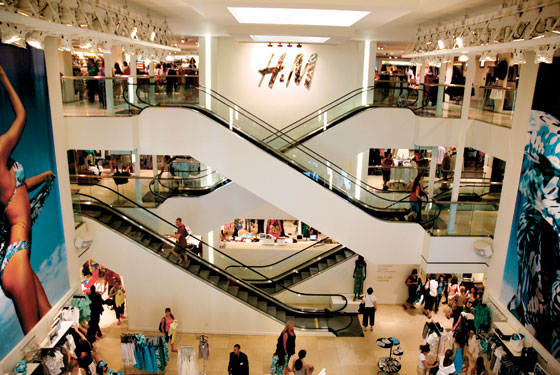
How It Works: Swedish superpower Hennes & Mauritz (1,400 stores worldwide) is a cash cow because goods go from design desk to store in as little as two weeks. Competitors take a minimum of three months. What does this mean? H&M orders clothes from its 700 vendors (60 percent in Asia), and picks up and pays for the clothes often within two weeks. In return, vendors slash their usual fees by up to half. “In an industry that’s notorious for department stores’ either not paying clothing makers or paying 50 to 70 cents on the dollar, H&M always pays on time, in full,” says Burt P. Flickinger III, a retail consultant who provided the markups below. “Vendors know that, so they agree to a margin under 30 percent.” So H&M’s savings are passed on to customers in the form of an $18 average product price. Furthermore, “H&M’s flagship lease was an ingenious deal,” says Philip Sprayregen, principal at the real-estate consultancy Byrnam Wood. “They took office space that was a tough rent at the time [2000] and probably got a great renewal rate, so they are and will be paying well below market rate.”
Employees: 250 in the flagship.
Annual Revenue: $36 million ($7.7 million is profit) at the flagship, which is three times greater than at H&M’s other city stores.
Annual Flagship Overhead Costs: Goods: $19.2 million; rent: $10.2 million; marketing: $1,440,000; salaries: $1,092,000.
Most-Profitable Items: Jewelry: 50 to 70 percent markup; hats and scarves: 50 to 70 percent markup; formal clothing: 50 percent markup.
Least-Profitable Items: Bathing suits: $2 to $3 markups; intimate apparel: 10 to 30 percent gross margin; basic tops and sweaters: 10 to 30 percent gross margin. “A key part of their marketing signature is bathing suits,” says Flickinger. The markup isn’t much, but “they make customers trust the prices and then spend three times longer in the store.”

Cost-Cutting Strategy: H&M salaries only one sixth of staff, relying largely on low-paid students. Similar stores run closer to 60 percent part-timers.
Future Investments: H&M is building its third Fifth Avenue Store, at 42nd Street. “Retailers make a statement by building on Fifth—there are other motivations besides profit,” says Davidowitz. He estimates that half of the flagships between 50th and 57th Street are not profitable.
Why We’re Lucrative Customers: Manhattanites are predictable fashion drones, buying three trucks’ worth of clothes a day, in precisely seasonal color trends and cuts. “The only other city that compares this way is Los Angeles,” says spokesperson Lisa Sandberg.
New Yorkonomics: New York is a hub of innovation both because the city crams smart people together and lets them riff off each other. By attracting innovators, the city gets access to their new ideas, and I expect that proximity to H&M will set off some intellectual lightbulbs in the heads of New York’s older retailers.
MARKUP OF TOP-SELLING ITEMS:
Skinny Pants: 25%
Bohemian Tunics: 25%
Printed Hoodies: 30%
Berets: 60%